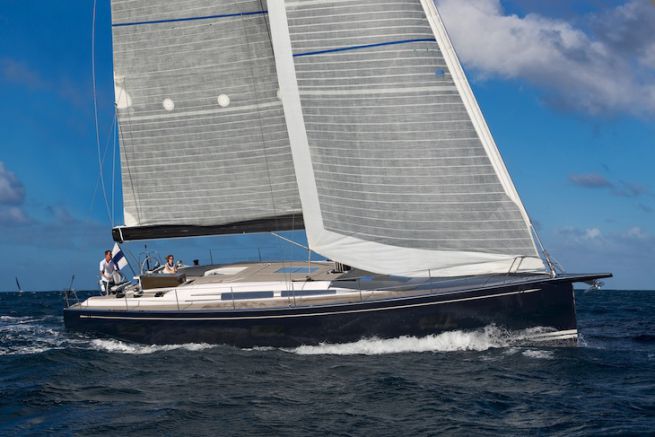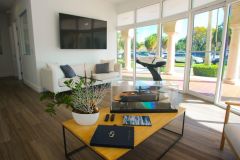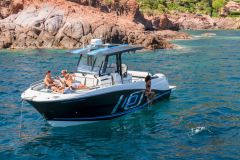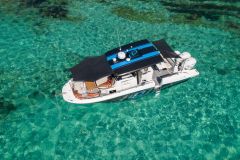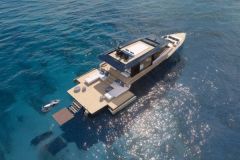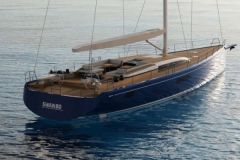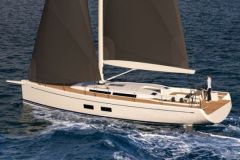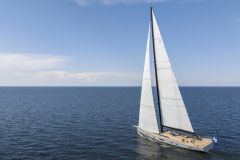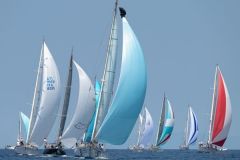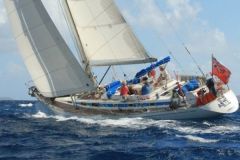A mythical model
In 1971, Nautor's Swan launched the Swan 48, which became one of the most emblematic yachts of the Finnish shipyard. Designed by the New York firm Sparkman & Stephens, it has proven its worth on the Bermuda Race and Transatlantic Race and achieved excellence on the Admiral's Cup, a kind of world cup for racing yachts. 46 units of this racing-cruise sailboat were sold during its 5 years of production.
In 1995, the naval architect German Frers designed a new version of the Swan 48, while maintaining the level of elegance and performance of its ancestor. 57 boats were built, today they are still highly sought after on the second-hand market.
" The Swan 48 was an exceptional boat, very fast and stable for its time. It was replaced by the 46, a kind of small Swan 53 (now Swan 54), but unlike its big brother, due to lack of success, production was stopped 6 years ago. Today, we are relaunching this brand new Swan 48, in the contemporary line of 65 and 78. We don't have a boat of this size in the range and there is a significant demand. We have already sold 17 units without the first sailboat touching the water." explains Jean-Marie Vidal, importer France Swan.
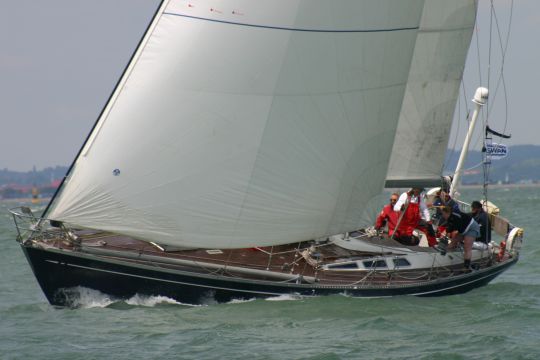
A more modern model, in line with the great Swan
This new yacht retains more or less the same dimensions as its predecessor, but the distribution of volumes and weights is quite modern. The Swan 48 has an overall length of 14.75 m (48.4 feet) (compared to 14.83 m for the former Swan 48) with a standard draught of 2.40 m, an air draught of 23.71 m and a midship of 4.60 m (compared to 4.30 m before). The displacement is quite similar: 14.3 tons for the old version compared to 14.9 tons for this new Swan 48.
"The boat is more modern, the master boat has almost moved back to the transom. We preferred to make a rounded chine rather than a sharp chine. The boat is wider to provide more hull stability. However, compared to the old version, we have kept the same ratios in terms of, sail displacement/surface/stability" jean-Marie Vidal explains.
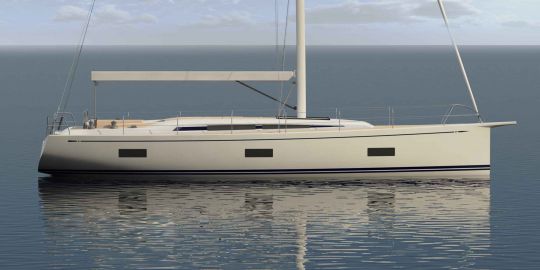
The lines of the Swan 48 are inspired by the latest generation of large yachts from the Finnish shipyard: the Swan 115, and the very recent Swan 78 and 65 . It was the naval architect German Frers who conceived the renewal of this mythical model by combining performance, comfort at sea and quality of outdoor and indoor life.
As on the latter models, the master mate was pushed back almost to the transom to gain in form stability. If it has been designed to sail with a reduced crew (2 people), its configuration with 3 cabins and two toilets allows it to comfortably accommodate a family. This race-cruise sailboat will also be the ally of your ORC/IRC gauge regattas.
The lines are very classic in the continuity of the Swan philosophy. The Swan 48 is sober and elegant, yet sporty. The architectural trend is to obtain stable and powerful boats at the usual angles of heel, and to do this, the architects have widened the hull and optimized the keel. Three keel options are available: standard, short and racing.
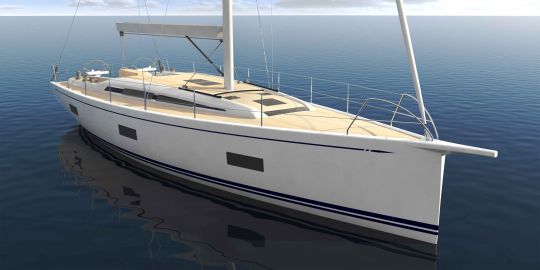
Double rudders and recoil rigging
The double rudders allow better control of the boat. However, Swan assures that he has kept the sensations and sensitivity of the bar.
In addition, double rudders are much shorter than a single rudder, which reduces the draught for the small keel. This version is the most cruising version, allowing you to reach shallow anchorage areas. To satisfy its demanding customers, Swan also offers a Performance Package with a deep keel and a carbon mast to rig a mainsail with a moderate horn, as well as an elongated bowsprit.
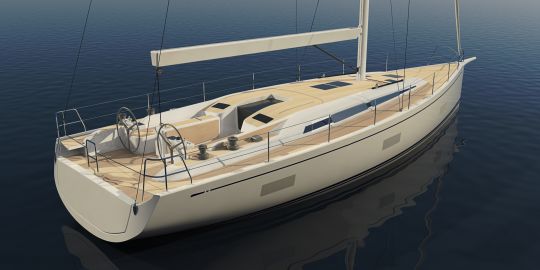
The current trend in the naval architecture of high-performance sailboats is to move the rigging back. This position allows a more balanced distribution of sail surfaces between the solent and mainsail and allows the use of larger downwind sails. The yard offers an optional self-steering jib with its rail in front of the mast.
Finally, Swan says he has found a mainsail hoist system to prevent the cockpit from being swept by the dangerous mainsail sheet in the event of an accidental gybe. We are curious to test this promising system.
The roof, a Swan trademark
The design of the roof is a trademark for Swan, and this since the launch in 1971 of the Swan 48, designed at the time by S&S. The design of the roof of this 3 e generation of Swan 48 recalls that of the last Swan 65 and 78. With its soft curves, the Swan 48's roof gives the impression of a bridge flush.
Swan has added an interesting design detail: two types of eyelids overhang the lateral roof plexis. They have two functions: to protect the square from direct sunlight and to give the boat a slightly more aggressive look.

One cockpit, two separate areas
The cockpit has the typical Swan layout, it is divided into 2 distinct parts.
The front of the cockpit is a lounge area dedicated to guests. It is equipped with benches for 6 to 8 people and a large removable table. This relaxation area is protected by a protective hood and a bimini. As for the aft end of the cockpit, it is dedicated to winch manoeuvres and wheel steering stations.

At anchor, the transom tilts into a bathing platform and allows access to the tender garage (2.80 max).
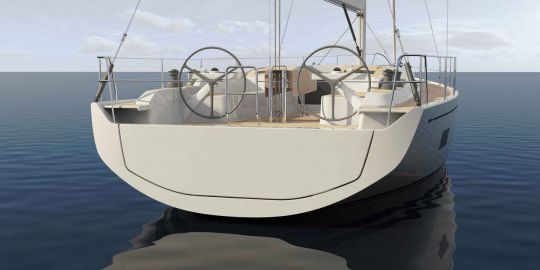
A bright and comfortable interior
Inside, there is a feeling of space provided by the brightness and height under the beam. The style is faithful to Swan, a blend of classic elegance. In the 3-cabin configuration, the owner's cabin is located at the front with its private bathroom. At the rear, two double cabins and a toilet are reserved for guests.
The central saloon is bright and functional with a galley on the port stern offering numerous worktops, a large refrigerator and a very large volume of storage space. On the port side, the U-shaped saloon houses a large dining table. Facing each other, the chart table is available in three configurations: tilting, facing the road with seat and storage or with a table and an additional armchair.
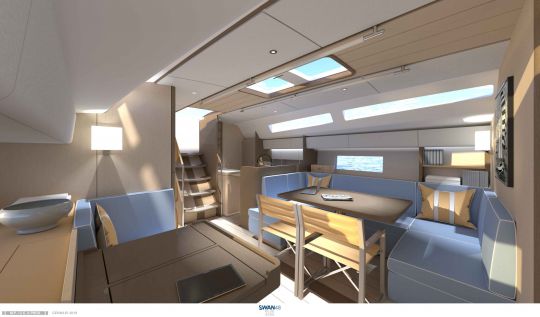
The engine hold has enough space to install a generator, which is essential for the luxury and comfort of such a sailboat. The length of the boat and the hull trough allow all the tanks and mechanical systems to be placed in the bilge, thus lowering the centre of gravity.
Three different atmospheres are available in the catalogue to personalise your interiors: Northern Light, typical of the Swan style, Blue Eyes, for a Scandinavian style and Red Velvet for a warm atmosphere.
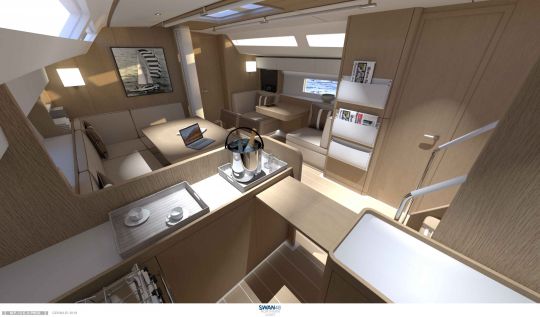
Rates: Count around 730?000 euros HT for a standard Swan 48 and around 800 at 850?000 euros HT for a turnkey sailboat.
